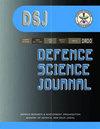Human and Environmental Bias Affecting Risk Perception in Military Radiological and Nuclear Operations
IF 0.8
4区 工程技术
Q3 MULTIDISCIPLINARY SCIENCES
引用次数: 0
Abstract
The urban military operating environment may offer favorable conditions for combat involving asymmetric actions or 4th generation warfare which includes the chemical, biological, radiological, or nuclear (CBRN) environment. The CBRN environment is characterized by threats and hazards capable of producing negative impacts to the operations. The detriment may be produced by intentional release of hazardous materials into the operational environment. This study deals with an environment deliberately contaminated by radioactive materials because of the activation of a radiological dispersive device (RDD). A computer simulation of the radioactive scenario was performed in order to produce useful information which in turn can be used to support decision-making. The main goal was to assess the risk of developing radio-induced solid cancer by studying the articulation between local environmental variables and a cognitive bias, the Dunning-Kruger effect. The findings highlight intuitive correlations between local atmospheric stability and cognitive bias affecting the threat level (radiation dose), the responsiveness and the perceived risk. The findings also allow us to infer that, especially in the military-operational context, the methodology proposed for the assessment of environment-human interactions may be decisive for correctly direct available resources, both human and material, reducing operational risk.影响军事放射和核行动风险感知的人类和环境偏见
城市军事行动环境可能为涉及不对称行动或第四代战争的作战提供有利条件,包括化学、生物、放射性或核(CBRN)环境。世邦魏理仕环境的特点是能够对运营产生负面影响的威胁和危险。故意将危险材料释放到操作环境中可能会造成危害。本研究涉及由于放射性分散装置(RDD)的激活而被放射性物质故意污染的环境。对放射性场景进行了计算机模拟,以产生有用的信息,进而用于支持决策。主要目的是通过研究局部环境变量与认知偏差(Dunning-Kruger效应)之间的联系来评估发展放射性诱发的癌症的风险。研究结果强调了当地大气稳定性和影响威胁水平(辐射剂量)、反应性和感知风险的认知偏差之间的直观相关性。研究结果还使我们能够推断,特别是在军事行动背景下,为评估环境与人类互动而提出的方法可能对正确引导可用的人力和物力资源具有决定性意义,从而降低行动风险。
本文章由计算机程序翻译,如有差异,请以英文原文为准。
求助全文
约1分钟内获得全文
求助全文
来源期刊

Defence Science Journal
综合性期刊-综合性期刊
CiteScore
1.80
自引率
11.10%
发文量
69
审稿时长
7.5 months
期刊介绍:
Defence Science Journal is a peer-reviewed, multidisciplinary research journal in the area of defence science and technology. Journal feature recent progresses made in the field of defence/military support system and new findings/breakthroughs, etc. Major subject fields covered include: aeronautics, armaments, combat vehicles and engineering, biomedical sciences, computer sciences, electronics, material sciences, missiles, naval systems, etc.
 求助内容:
求助内容: 应助结果提醒方式:
应助结果提醒方式:


